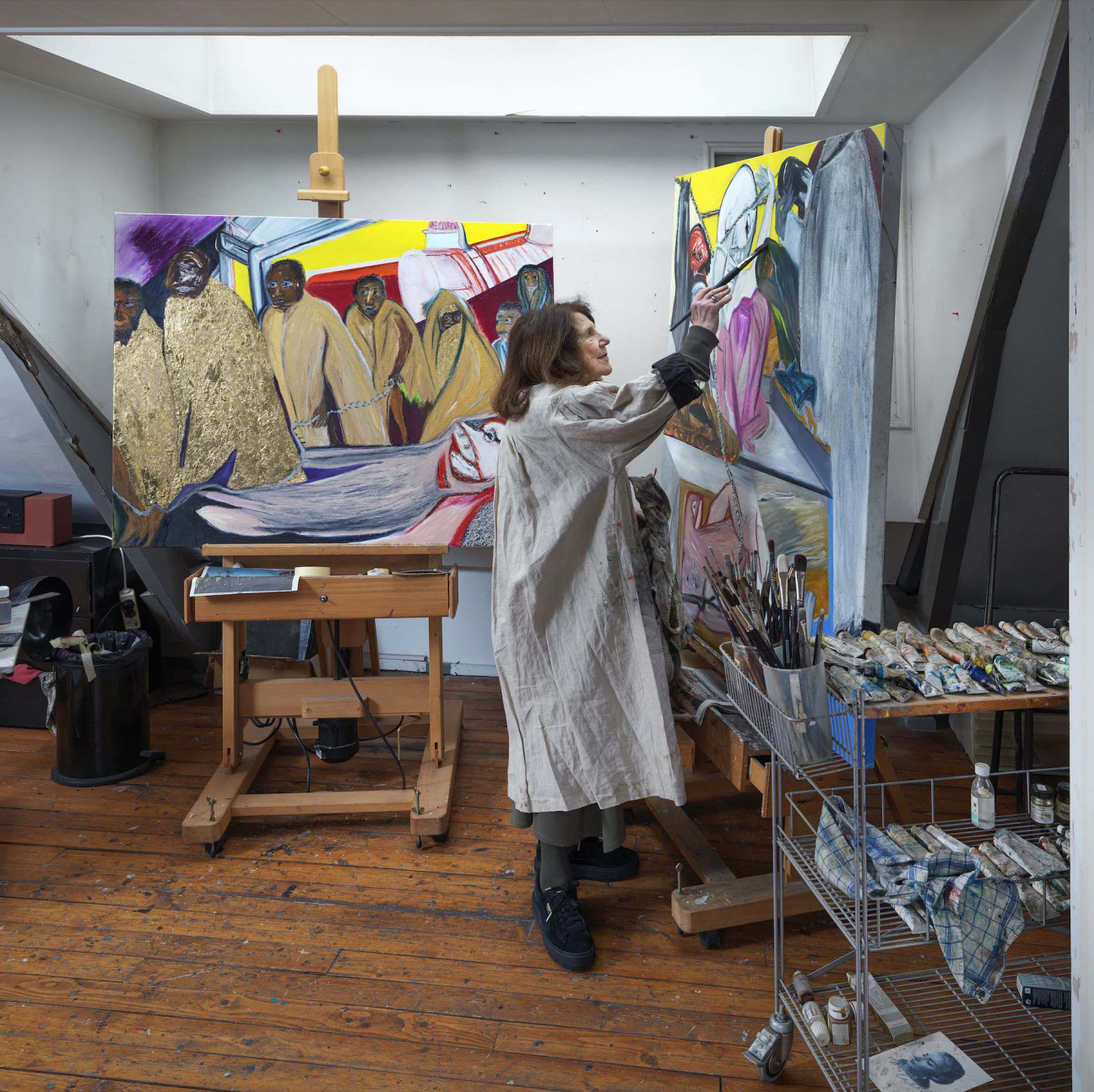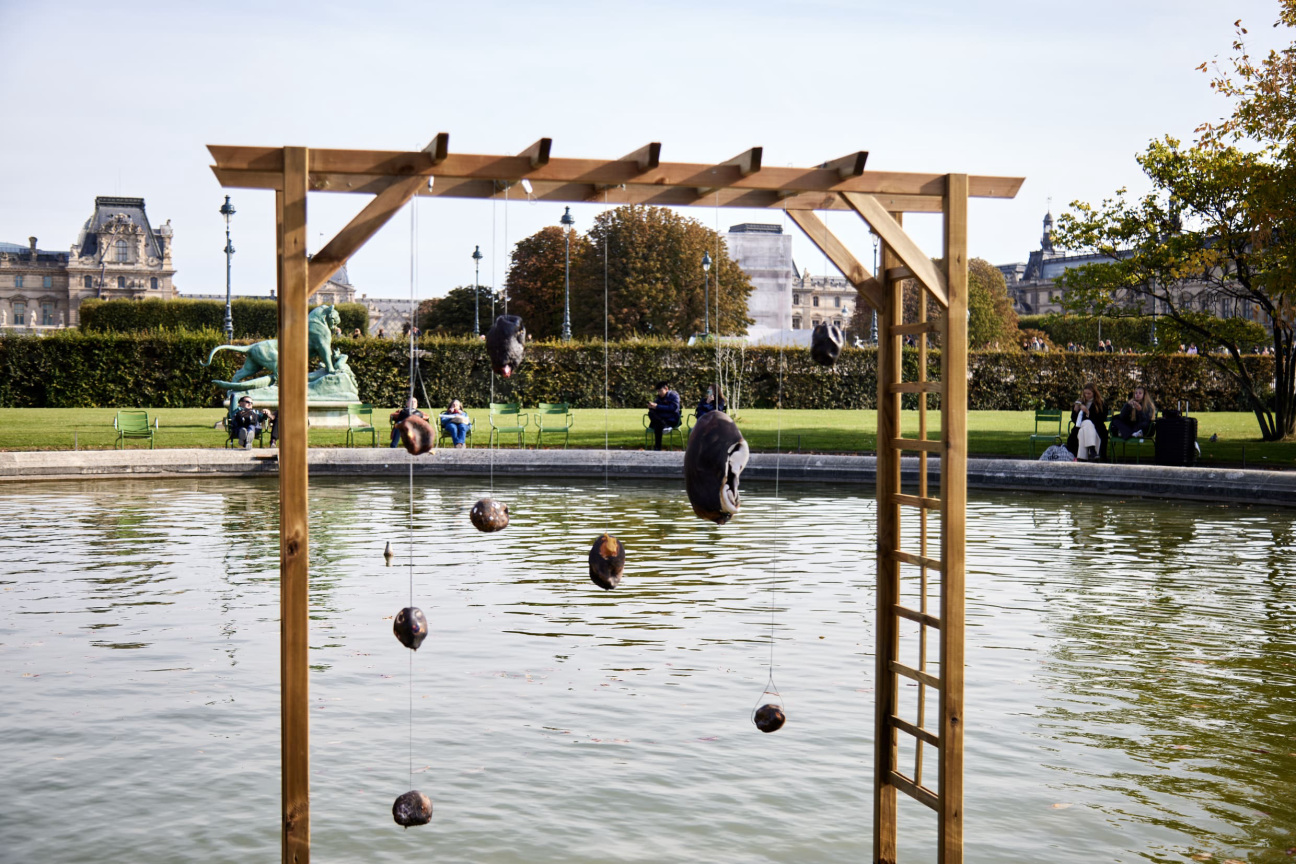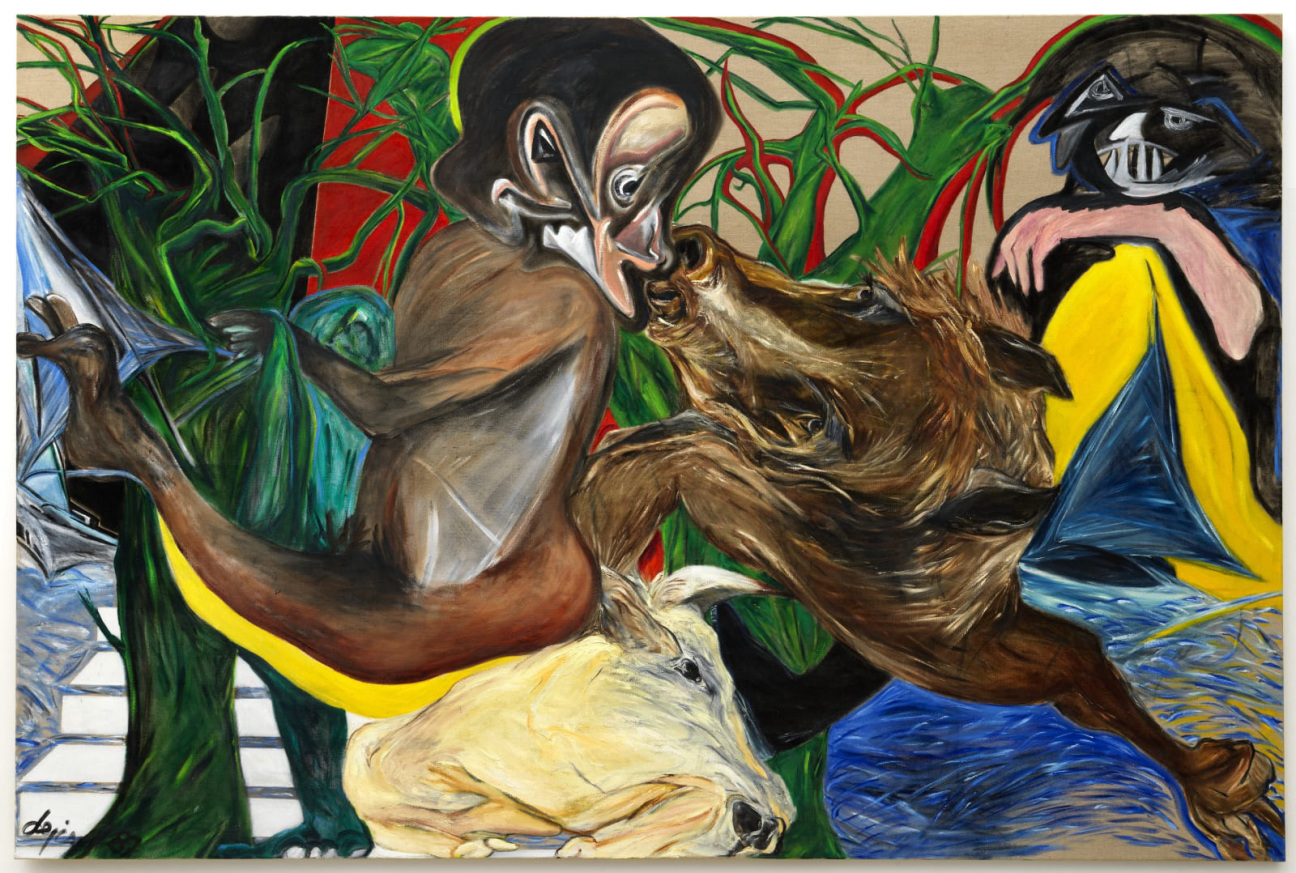
During last year’s Paris+ par Art Basel, Jacqueline de Jong brought baked potatoes, both natural and ceramic, to a pond in the Jardin des Tuileries. Stormy weather and the pond’s resident fish had their way with the installation, but de Jong left the experience with the conviction that she could still translate her ideas into reality. That unshakeable resolve has fueled the Dutch artist to confront grave topics with endless energy and a singular sensibility over her six-decade-long career. At 85, de Jong finds herself reflecting on work from years past, the choices she made then continuing to surprise even now.
CULTURED: Do you remember the moment when you realized you were going to be an artist?
Jacqueline de Jong: I was very young when I started working on canvas and with paint. Back then I was actually quite influenced by Nicolas de Staël. I was around 14 or 15 when I made those works. But then there was a long time when I didn't because I wanted—I was going to be in actress.
CULTURED: You studied drama.
De Jong: I was in Paris and London [at the Guildhall School] for this actress thing. Then when I stopped that because I failed the exams, I started working at the Stedelijk Museum [in Amsterdam] and took up painting again. At that moment, I was much more influenced by getting together with Asger Jorn, by his ideas and Situationist ideas. But I still didn't have the idea of really being a professional artist, since I had my job [at the museum]. And my job took much energy and much pleasure. Until I got the feeling that I had to. By that time, I decided—a bit under the influence of [Willem] Sandberg, the director of the Stedelijk Museum [at the time]—to go to Paris and study graphics at Atelier 17 with Stanley William Hayter. And that's when I really started to want to be a professional artist, but I didn't know how, of course. Being an autodidact, I didn't have any schooling. It started in '62, when I had my very first exhibition. Then I realized, "Well, it's getting public. And it also sells." People see your work, then you feel professional. It's very practical in a way.

CULTURED: So much of working as an artist is practical. To live as an artist is to also think about logistics.
De Jong: When you eat, you also live as an artist. Are you different when you have a pencil or a brush in your hand, versus when you have a fork in your hand? I'm not. The gesture of making art is when the public gets involved. It's not only for your own pleasure.
CULTURED: Did the public understand your art when you first started to exhibit in the 1960s?
De Jong: I have no idea. It's more about the dialogue, when there's a dialogue with other viewers, even if they're only your friends. It's not only this egocentric handling.
CULTURED: Did any specific artists provide a roadmap for you at that time? Either, "I want to do something similar to them," or "I want to do something radically different from them"?
De Jong: Since I didn't go to art school, I wasn't among others. I didn't have very much contact with people of my age, [until I was in the Situationist movement]. My relationship with Jorn, who was 25 years older than me, was, of course, very strong. But my first works were very influenced by Nicolas de Staël. When I saw the exhibition [of his work at the Musée d'art moderne de Paris], I thought, It's so clear. Why Nicolas de Staël? I don't remember. He was a very beautiful man, that might have been the reason. No, but it was mainly because I was interested in his technique, in his colors. I worked in the studio of Karel Appel, who was very different from Jorn. And I saw the huge amount of paint he was using, while Jorn was using small tubes of color. That makes a huge difference; there was a material difference that was very important. But I can't say that I remember any advice from them. It might be because it's so long ago, or also because it didn't impress me. Maybe I didn't listen enough.

CULTURED: Do you think you had to give up something to become an artist?
De Jong: Why is it called an artist? Because you make art. It's a profession. Artistry—I think it's a bit of an old-fashioned word.
CULTURED: What do you call yourself then, if you don't call yourself an artist?
De Jong: [Laughs] I don't call myself anything. I don't know what I should call myself. A human being, a universal human being. It's a bit like asking, "What sex are you?" What I do is make art. But when I'm cooking, I'm not a cook… That's the advice I give to young artists: Try to get professional. Be curious and try to inhale as much as possible around you and within you, to get as much material as possible to use in your work. You get professional the moment you start selling—or giving away. It becomes a product. That's also why the Situationist movement after '62 threw everyone out; art became a capitalistic product, and you could make money with it. And that was wrong.

CULTURED: How do you balance your moral or political commitments to creating art in a capitalist ecosystem?
De Jong: You can't balance it. There's one essential thing. Imagine all the material you use—it's all ecologically a disaster. That makes it very difficult when you think about it. When I wash my brushes, I think, My God, what am I doing? That's something that probably 20 or 30 years ago I wouldn't have thought about. Things change because the world is changing. That's also why this term of being an artist… When do you stop being an artist? Amateur professionel, that's a French term, which is a very good term. You might say we all are amateur professionals, because amateur also means you like what you do. My work is almost all about refugees and immigrants [right now], but that doesn't help anything to change the world. I illustrate it in my work; I try to [make it impactful] so people will at least look.
CULTURED: Have you surprised yourself lately?
De Jong: Surely. When I see a work of mine that I haven't seen in a long time, I surprise myself. Like recently at Art Basel, there was a painting [on view] I hadn't seen for almost 60 years. Then another painting that was in Australia came back too, which has a very enigmatic text. I have no idea where and why I wrote this text and put it into this painting from 1965. There are many things that are still enigmas to me, and that is exciting.
This interview is part of a series of conversations with female artists over the age of 75. To read more, take a look at our stories with the avant-garde Pippa Garner, sculptural archaeologist Simone Fattal, and mixed media pioneer Betye Saar.










 in your life?
in your life?

